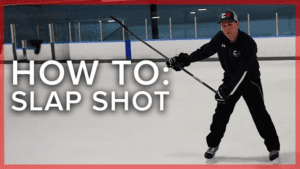The following are steps to take to ensure confidence within your goalkeeper prior to the start of the game. Remember, there are three specific components that must be reached for a successful warm-up:
-
Psychological
The first and most important thing is that your goalkeeper is in a confident and in a relaxed state. This can be obtained through positive reinforcement and putting him or her in situations where they will achieve success.
-
Physical
The body has to be ready to perform the movements required of a high level goalkeeper (footwork, catching, diving etc).
-
Technical
It is my belief that all game coaches should have a basic understanding of the technical aspect of goalkeeping (i.e. body behind the ball, body set square to the shot etc.). With that being said, you should warm up your goalkeeper with activities that are realistic to the movements you expect in a game, all while using basic technique. Note: It is not your job, nor should you correct the goalkeeper on technique prior to the game. That will only freak out the goalkeeper and eliminate the most important component. Component #1.
All of these criteria have to be met in order to achieve success. That being said here’s a simple framework for a successful warm-up. Please remember that due to the level of your goalkeeper (experience, age, etc). you may have to alter your warm-up to guarantee maximum effect. Note: Remember, every goalkeeper is different! What may work for one goalkeeper may not work for another. It is your job to have open communication with the goalkeeper to ensure that they get the most of their warm-up.
Warm-Up Blueprint:
Footwork
Getting your goalkeeper to move their feet in a consistent basis (jogging, side shuffling, cross-over steps, sprinting etc). This can be done with the ball or without the ball.
Ball handling
Keep it simple. Volleys to the hands, scooping the ball off the ground, balls into the “basket” (chest), catching high balls. Note: Make your high balls realistic to the level of your goalkeeper. Example: U9s do not need a ball fifty feet in the air.
Hitting the ground comfortably, collapse diving
Once again, this does not have to be elaborate. This can be as simple as a soft toss into space with the goalkeeper stepping laterally to collapse.
Cross balls and shots
The goal here is to have the goalkeeper become comfortable with moving inside the 18. All the mechanics of steps 1 through 3 should come into play.
Harder shots from angles. Always try to strike a moving ball
Now you’re implementing the mechanics of steps 1 through 3 and the tactical awareness of step 4 to simulate game realistic shots, and reaction and set time.
Goal kicks, punts, and passbacks
The final stage of the warm-up should allow for the goalkeeper to get their bearings, slow down, and mentally prepare for the game while staying active. A good choice for this is distribution, as they are no longer in a pressure situation, yet they are still doing something “game related.”
All in all it should take 35 minutes for a good warm-up. Incorporation of the team is optional but not recommended for younger players.
Frequently asked questions
Q1: What if I don’t have that much time?
A: You can have the goalkeeper warm-up prior off the field, so they are ready to go to game situation once the game begins.
Q2: What if I don’t have a goal?
A: The majority of the warm-up does not incorporate the goal. Once the goal becomes available, then use it. You can also set up cones like a goal in the meantime. Remember the goalkeeper does not “play” in the goal. They play in the goal box. A goal is simply an area they are trying to protect.
Q3: What about younger players
A: I would focus on ball handling, footwork, and getting to the ground.
Q4a: What about my team? I want them to take shots on goal.
A: Have them do their shooting when the goalkeeper is out of goal working on his distribution.
Q4b: But I need a goalkeeper in goal.
A: That’s a misconception. You can have a field player stand in goal, a parent, yourself. All that is being done is ruining the goalkeeper’s confidence by having them consistently hammered.
Q5: So are you saying never use your team with the goalkeeper?
A: No, that’s not what I’m saying. Incorporate your field players into the warm-up (swinging in crosses, hitting moving balls, shots up top from distances, etc). The difference is that they are part of the warm up. Have them focus on getting the shot on frame rather than scoring. As the warm-up builds, they can start shooting farther away from the keeper’s range until he/she is going at game speed.
How useful was this post?
Click on a star to rate it!
Average rating 0 / 5. Vote count: 0
No votes so far! Be the first to rate this post.


